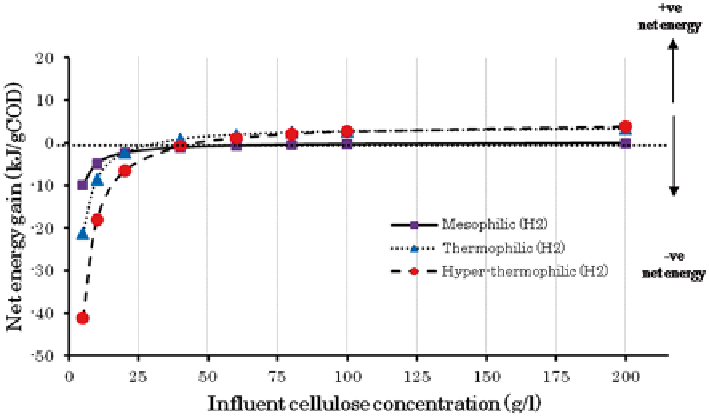Environmental Engineering Reference
In-Depth Information
Fig. 8.8
Net energy gain at different fermentation temperatures for different influent cellulose
concentrations
As can be seen from Fig.
8.8
, even though the higher fermentation temperatures
(thermophilic and hyper-thermophilic) are viewed as favorable for high yield and
stability of hydrogen production, the net energy gain was significantly negative
relative to mesophilic conditions at low concentrations of cellulose ≤ 20 g/l. These
results are consistent with those reported for thermophilic temperatures (55 ºC),
where the same net energy gain was obtained (− 20.7 kJ/g COD) using cellulose-
containing wastewater and − 22.6 kJ/g COD using starch wastewater (Karnayakage
et al.
2012
). If cellulose concentrations can be increased to ≥ 40 g/l however, the
thermophilic fermentation is expected to have a better economic performance for
bio-H
2
production. This is especially the case when using feedstocks which are
pretreated to break down cellulosic biomass by chemical, mechanical or thermal
disintegration which overcomes the rate limiting step of biological hydrolysis,
improving the anaerobic fermentation process and biogas yield.
8.4
Methane Fermentation
8.4.1
Background
Methane fermentation is a well-established technology used for treating organic
residues almost regardless of their composition. It is carried out by heterogeneous
microbial populations involving multiple biological and substrate interactions with
end production of methane (55-75 vol %), CO
2
(25-45 vol %) and fermentation

